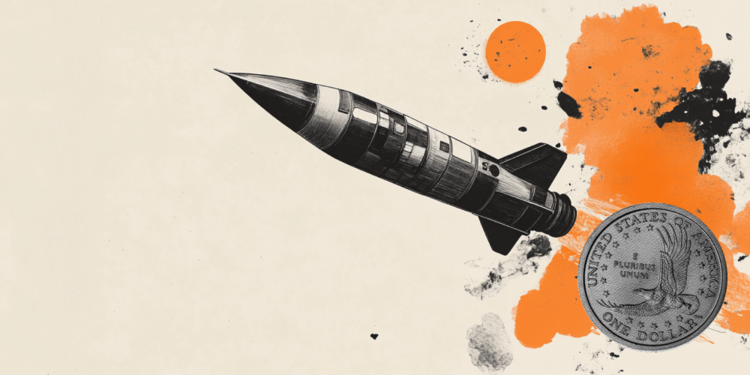North Korea launched an intercontinental ballistic missile (ICBM) on Friday, the second missile test by the Kim Jong Un regime in two days. The act was condemned by the US and its allies as a “brazen violation” of UN resolutions.
The ICBM was launched around 10:15 am local time from the Sunan area of the North Korean capital Pyongyang and flew about 1,000 km east, the South Korean Joint Chiefs of Staff (JCS) said.
Japanese Prime Minister Fumio Kishida said the missile likely landed in Japan’s exclusive economic zone (EEZ), about 210 km west of Japan’s Oshima Oshima Island, according to the Japan Coast Guard. He didn’t fly over Japan.
“North Korea continues to carry out provocative actions with a frequency never seen before,” the prime minister told reporters on Friday at an Asia-Pacific Economic Cooperation (APEC) meeting in Bangkok, Thailand.
“I want to reaffirm that we cannot accept such actions,” he declared.
According to Kishida, the Japanese government will continue to collect and analyze information and provide immediate updates to the people. So far, there have been no reports of damage to ships at sea, Kishida added.
The ICBM reached an altitude of about 6,100 kilometers at Mach 22, or 22 times the speed of sound, according to the JCS, which said details were being reviewed by South Korean and US intelligence authorities.
On Friday morning, US Vice President Kamala Harris held a meeting outside the APEC summit with leaders from Japan, South Korea, Australia, New Zealand and Canada to condemn the launch.
“I have asked this group of allies and partners to join us in condemning North Korea’s long-range ballistic missile launches,” the vice president said. “I also asked them to come together so that we, as allies and partners, can talk about the next steps. North Korea’s latest conduct constitutes a blatant violation of multiple UN Security resolutions. It destabilizes security in the region and unnecessarily increases tensions.”
South Korean President Yoon Suk Yeol also on Friday ordered the “active implementation” of reinforced extended deterrence measures against North Korea.
The president said his administration will strengthen its alliance with the US government and bolster its defense posture and security cooperation with the US and Japan.
“The government will not tolerate North Korea’s provocations,” the cabinet said. “We have overwhelming responsiveness and willingness to react immediately to any North Korean provocation, so North Korea must not make an error of judgment.”
The statement adds that North Korea gains nothing from continued provocations, while warning that sanctions against the country will only be tightened, resulting in Pyongyang’s further international isolation.
Missile scale test
Friday’s missile reached about 100 kilometers in altitude and less range compared to the one launched from Pyongyang on March 24, which recorded the highest altitude and longest duration of any North Korean missile ever tested, according to a report by the Korea Central News Agency (KCNA) at the time. The March missile reached an altitude of 6,248 km and flew a distance of 1,090 km, KCNA reported.
Calling the launch a “significant provocation and a serious act of threat”, South Korea’s staff admonished North Korea for violating the UN Security Council resolution and urged it to stop immediately.
Misawa Air Force Base issued an alert for people to take shelter after the missile fired, according to U.S. Air Force Colonel Greg Himite, director of public affairs for U.S. forces in Japan. The alert was lifted and the US military is still analyzing the flight path.
US President Joe Biden was briefed on the missile launch and his national security team “will continue to consult directly with allies and partners,” National Security Council spokeswoman Adrienne Watson said in a statement on Friday. -fair.
“The door has not been closed to diplomacy, but Pyongyang must immediately cease its destabilizing actions and choose diplomatic engagement instead,” Watson added. “The United States will take all necessary measures to ensure the security of the American motherland, the Republic of Korea and Japanese allies.”
Friday’s launch comes a day after the North Korean government fired a short-range ballistic missile into waters off the east coast of the Korean Peninsula, and issued a stern warning to the United States of “fiercer military counteraction” because of its closer defense ties with South Korea and Japan.
Friday’s action was the second test launch of an ICBM this month. On November 3, a missile was fired and apparently failed, a South Korean government source told CNN in season.
Increased missile testing
The aggressive ramp up in weapons testing and rhetoric has sparked alarm in the region, with the US, South Korea and Japan responding with missile launches and joint military exercises.
Leif-Eric Easley, an associate professor of international studies at Ewha Womans University in Seoul, said North Korea was “trying to disrupt international cooperation by increasing military tensions and implying that it has the ability to hold U.S. cities at risk of nuclear attack.
North Korea has conducted missile tests for 34 days this year, sometimes firing multiple missiles in a single day, according to an estimate by the CNN 🇧🇷 The count includes both cruise missiles and ballistic missiles, with the bulk this year being ballistic.
There are substantial differences between these two types of missiles.
A ballistic missile is launched with a rocket and travels out of Earth’s atmosphere, gliding through space before re-entering the atmosphere and descending, powered only by gravity to its target.
A cruise missile, on the other hand, is powered by a jet engine, remains within the Earth’s atmosphere during its flight, and is maneuverable with control surfaces similar to those of an airplane.
Ankit Panda, senior fellow in the Nuclear Policy Program at the Carnegie Endowment for International Peace, said that while he doesn’t see Friday’s alleged ICBM launch “as a message in itself”, the act could be seen as part of the “process North Korea’s capability development plan that Kim has identified as essential to the modernization of its nuclear forces.
US and international observers have warned for months that North Korea appears to be preparing for an underground nuclear test, with satellite images showing activity at the nuclear test site. Such a test would be the isolated nation’s first in five years.
Jeffrey Lewis, director of the East Asia Non-Proliferation Program at the Center for Non-Proliferation Studies, said the ICBM test was designed to validate parts of North Korea’s missile program, something Kim Jong Un has promised to do this year. .
The recent short-range tests “are exercises for frontline artillery units practicing preemptive nuclear strikes,” Lewis said.
He dismissed any political or negotiation messages from the tests.
“I don’t think of testing as a major signage. North Korea is not interested in talking right now,” concluded Lewis.
*Emiko Jokuza, da CNN contributed to this report
Source: CNN Brasil
Bruce Belcher is a seasoned author with over 5 years of experience in world news. He writes for online news websites and provides in-depth analysis on the world stock market. Bruce is known for his insightful perspectives and commitment to keeping the public informed.







